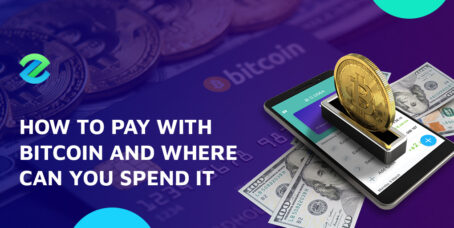Blockchain technology has innovatively emerged into many industries today, including finance, healthcare, IT, Fintech, Retail, and many more. Experts believe that the adoption of blockchain technology will accelerate to reach all industries in the upcoming years. Many global companies are investing in this technology to join the massive shift towards a new era of economics. Here are some major crypto trends powered by decentralized blockchain and peer-to-peer networks.
Table of Contents
NFT
Tokenization is one of the blockchain features which give monetary incentives for blockchain developers and users. One type of token that is highly in demand and rapidly proliferating is the non-fungible token (NFT). NFTs are unique and not interchangeable digital assets stored in the blockchain. They represent digital pieces of art, music, video, and images, etc. To learn more read, what are NFTs.
However, now the NFT sector is moving far beyond simply securing artworks and other forms of artistic content. Today people use non-fungible tokens in industries, such as fashion, events, sports, and many more.
DeFi
DeFi stands for decentralized finance. It is a form of finance based on blockchain and does not rely on central financial institutions, such as exchanges, brokers, or banks. Instead, DeFi uses smart contracts stored on blockchain platforms such as Ethereum to build a system with better transactions and offers for users.
If DeFi passes the test of speed, cost, transparency, and adoption, the financial institutions may come into play to bridge their centralized structure and DeF’s.
CBDC
Central Bank Digital Currency (CBDC) is a form of money based on blockchain. It is a legal tender that is created and backed by a central bank. These digital tokens from central banks can be used instead of real money.
One of the potential advantages of launching central digital currency is the simplification and acceleration of international settlements. Moreover, many experts claim that CBDCs will lead to the stability of the payment system and financial affordability. In other words, the launch of centralized digital currency will make it possible to use a non-cash means of payment even for citizens who do not have a bank account.
BaaS
One of the most trending technologies in crypto is BaaS — Blockchain-as-a-Service. It offers a third-party cloud-based infrastructure for companies that want to operate on the blockchain or build some blockchain-based applications. So the technology gives the opportunities for clients to back up any data like files, databases, virtual machines, and hosts.
So why is BaaS trending now? Because it’s an opportunity for companies to design a set of banking services that they need and customize a financial institution for themselves.
AI
Artificial intelligence (AI) is now used in many industries, including blockchain. The mining process requires a lot of computing power and electricity, and distributed ledgers sacrifice their efficiency for features such as immutability and censorship resistance. In this situation, AI can become a tool that can help optimize power consumption.
Another area of AI and blockchain collaboration is data storage. The history of transactions in the blockchain is constantly growing in size. In this case, AI can implement new methods for distributing databases, reducing the size of the blockchain for more efficient data storage management.
The future of cryptocurrencies is difficult to determine. Some predict that digital currency will forever change the way we use money and interact with them, while others warn of a dangerous bubble.
Nevertheless, 2020 has been a successful year for many cryptocurrencies, from Bitcoin, which hit all-time highs in December, to less-known altcoins. Wider adoption and use are the keys to allow cryptocurrencies to reach their full potential and continue their positive movement in 2021.









